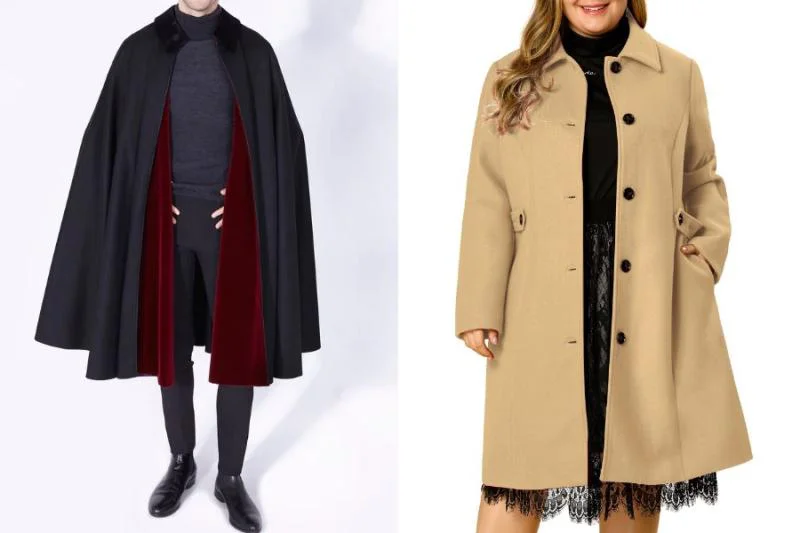Not that I had ever mistaken capes for coats, but it was hard to differentiate it. With research, I now understand that capes have no sleeves and drapes over the shoulders. From short to floor-length, they can fasten at the neck. Coats have sleeves and extend below the waist, usually with buttons or other closures. The study could be of help too. Read on o find out more.
What are Capes?
A cape is a sleeveless garment draping over the shoulders and fastening at the neck, freeing the arms. It is typically worn as an outer layer and can come in various lengths, from short to floor length. Capes have been worn throughout history and across cultures, with different styles and materials used depending on the time and place. They can be made from various fabrics, such as wool, silk, or cotton, and may have a lining for added warmth. Capes can be worn for both practical and aesthetic reasons. They can provide warmth and protection from the elements, such as wind and rain, and can also be worn as a fashion statement, adding a unique and dramatic element to an outfit. Capes may also be worn as part of costumes or uniforms for various professions, such as superheroes, witches, or military officers.
What are Coats?
A coat is an outerwear garment that protects and warms. Men and women can wear coats of various styles, lengths, and materials. Coats are long-sleeved, below-the-waist garments with buttons, zippers, or other closures. Wool, leather, cotton, and synthetic coats can be lined or insulated. Coats have many styles and functions. Pea coats, trench coats, parkas, puffer jackets, and duffle coats are popular coats. Each coat style has a purpose, such as keeping you warm, repelling rain or snow, or adding style to an outfit. Coats are essential for style and function. They can be dressed up or down for formal or casual occasions.
Difference Between Capes and Coats
Capes and coats are both types of outerwear garments worn over other clothing to provide warmth and protection from the elements. However, there are some critical differences between the two. Capes are typically sleeveless and draped over the shoulders, freeing the arms. They may fasten at the neck and come in various lengths, from short to floor length. In contrast, coats have sleeves and extend below the waist, typically with buttons or other fastenings to keep them closed.
Capes are often worn for aesthetic purposes, adding a dramatic and unique element to an outfit. Coats, conversely, are more commonly worn for practical reasons, providing warmth and protection from cold, wind, and rain. In terms of style and function, coats are more versatile and practical, while capes are more statement pieces. Both capes and coats can be made from various materials, including wool, cotton, and synthetic fabrics, and may be lined or insulated for added warmth.







